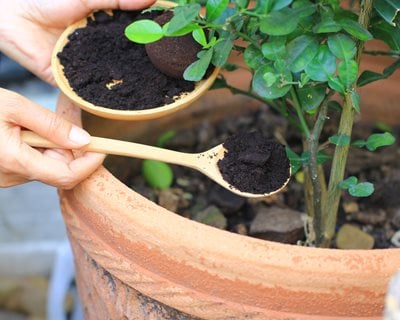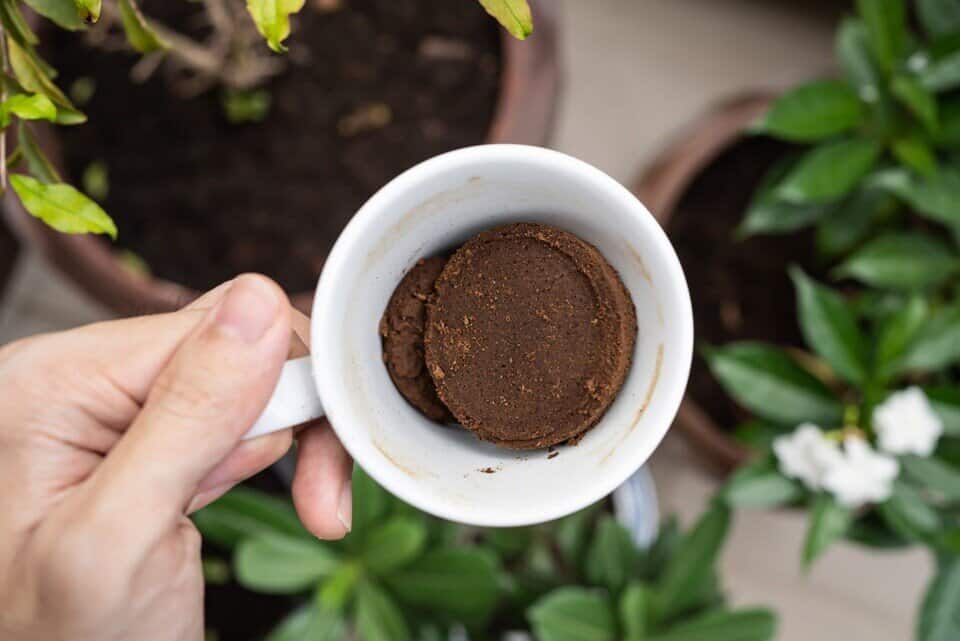Unlocking the Benefits of Coffee Grounds for Plant Growth
Coffee grounds have long been recognized as a valuable resource for gardeners and plant enthusiasts. Rich in essential nutrients, coffee grounds can provide a natural boost to plant growth, soil health, and the environment. As a sustainable and eco-friendly alternative to synthetic fertilizers, coffee grounds are an attractive option for those seeking to reduce their environmental footprint.
One of the primary benefits of using coffee grounds in gardening is their ability to improve soil structure. The high concentration of organic matter in coffee grounds helps to increase the soil’s water-holding capacity, aeration, and overall fertility. This, in turn, creates an ideal environment for beneficial microorganisms to thrive, promoting a healthy and balanced ecosystem.
Coffee grounds are also an excellent source of essential nutrients, including nitrogen, phosphorus, and potassium. These macronutrients play a critical role in plant growth and development, supporting the production of new tissues, roots, and leaves. By incorporating coffee grounds into the soil, gardeners can provide their plants with a natural and sustained source of these vital nutrients.
In addition to their nutritional benefits, coffee grounds have also been shown to have a positive impact on the environment. By repurposing coffee grounds as a fertilizer, gardeners can reduce the amount of waste sent to landfills and minimize the need for synthetic fertilizers. This not only helps to conserve natural resources but also reduces the environmental pollution associated with fertilizer production and disposal.
When used in conjunction with other organic gardening practices, coffee grounds can be a powerful tool for creating a thriving and sustainable garden. By harnessing the natural benefits of coffee grounds, gardeners can promote healthy plant growth, improve soil fertility, and contribute to a more environmentally friendly gardening practice.
As a natural and readily available resource, coffee grounds offer a unique opportunity for gardeners to reduce their environmental impact while promoting healthy plant growth. With their rich nutrient profile, ability to improve soil structure, and potential to support beneficial microorganisms, coffee grounds are an excellent addition to any gardening routine. By incorporating coffee grounds into their gardening practice, gardeners can create a more sustainable, eco-friendly, and productive garden – and reap the rewards of a thriving and vibrant outdoor space.
How to Use Coffee Grounds as a Fertilizer for Your Plants
Using coffee grounds as a fertilizer is a simple and effective way to provide your plants with essential nutrients. To get the most out of this natural fertilizer, it’s essential to use it correctly. Here’s a step-by-step guide on how to use coffee grounds as a fertilizer for your plants:
**Step 1: Mix with Soil**
Coffee grounds can be mixed directly into the soil at a ratio of 1 part coffee grounds to 10 parts soil. This will help to improve soil structure, increase the water-holding capacity, and provide essential nutrients to your plants.
**Step 2: Use as a Top Dressing**
Coffee grounds can also be used as a top dressing, sprinkled around the base of your plants. This will help to retain moisture, suppress weeds, and regulate soil temperature.
**Step 3: Avoid Over-Fertilization**
While coffee grounds are a valuable source of nutrients, over-fertilization can be detrimental to your plants. Avoid using too much coffee grounds, as this can lead to an overabundance of nitrogen, phosphorus, and potassium.
**Step 4: Monitor pH Levels**
Coffee grounds have a pH level of around 6.5, which is slightly acidic. If your soil is already acidic, it’s essential to monitor pH levels to avoid over-acidification.
**Tips and Precautions**
When using coffee grounds as a fertilizer, it’s essential to keep in mind the following tips and precautions:
* Use fresh coffee grounds, as stale grounds may not provide the same level of nutrients.
* Avoid using coffee grounds that have been contaminated with sugar, cream, or other additives.
* Coffee grounds can be used in conjunction with other fertilizers, but avoid over-fertilization.
By following these simple steps and tips, you can harness the power of coffee grounds to create a thriving and sustainable garden. Remember to always monitor your plants’ response to coffee grounds and adjust your application accordingly.
Coffee Grounds as a Natural Pest Repellent and Disease Preventer
Coffee grounds have been found to have natural pest-repelling and disease-preventing properties, making them a valuable addition to any garden. The science behind this phenomenon lies in the chemical composition of coffee grounds, which contains compounds that are toxic to certain pests and pathogens.
**Repelling Pests**
Coffee grounds have been shown to repel ants, snails, and other pests that can damage plants. The caffeine and other compounds present in coffee grounds can help to deter these pests, reducing the need for chemical pesticides. Simply sprinkle coffee grounds around the affected areas to create a barrier that pests won’t want to cross.
**Preventing Diseases**
Coffee grounds have also been found to have antifungal properties, making them effective against fungal infections such as root rot and leaf spot. The antioxidants present in coffee grounds can help to neutralize free radicals that can damage plant cells, reducing the risk of disease.
**Examples of Successful Applications**
Many gardeners have reported success in using coffee grounds to repel pests and prevent diseases. For example, one gardener used coffee grounds to repel ants that were infesting her rose bushes. Another gardener used coffee grounds to prevent fungal infections in his tomato plants.
**How to Use Coffee Grounds as a Pest Repellent and Disease Preventer**
To use coffee grounds as a pest repellent and disease preventer, simply sprinkle them around the affected areas. You can also mix coffee grounds with water to create a spray that can be applied directly to the plants. Be sure to use fresh coffee grounds, as stale grounds may not be as effective.
**Tips and Precautions**
When using coffee grounds as a pest repellent and disease preventer, be sure to follow these tips and precautions:
* Use coffee grounds in moderation, as excessive use can lead to an overabundance of caffeine in the soil.
* Avoid using coffee grounds on plants that are sensitive to caffeine, such as seedlings or young plants.
* Coffee grounds can be used in conjunction with other natural pest control methods, such as neem oil or diatomaceous earth.
By incorporating coffee grounds into your gardening routine, you can create a more sustainable and eco-friendly garden that is better equipped to handle pests and diseases. Remember to always monitor your plants’ response to coffee grounds and adjust your application accordingly.
The Science Behind Coffee Grounds’ Nutritional Value for Plants
Coffee grounds are a rich source of essential nutrients that can benefit plant growth and development. The nutritional composition of coffee grounds includes nitrogen, phosphorus, and potassium, making them a valuable addition to any garden.
**Nitrogen Content**
Coffee grounds contain a significant amount of nitrogen, which is essential for plant growth and development. Nitrogen is a key component of amino acids, which are the building blocks of proteins. Plants use nitrogen to produce new tissues, including leaves, stems, and roots.
**Phosphorus Content**
Coffee grounds also contain phosphorus, which is essential for plant growth and development. Phosphorus plays a critical role in the formation of roots, flowers, and fruits. It also helps to promote healthy cell growth and division.
**Potassium Content**
Coffee grounds contain potassium, which is essential for plant growth and development. Potassium helps to promote healthy cell growth and division, and it also plays a critical role in the formation of roots, stems, and leaves.
**Other Nutrients**
In addition to nitrogen, phosphorus, and potassium, coffee grounds also contain other essential nutrients, including magnesium, calcium, and sulfur. These nutrients play a critical role in plant growth and development, and they can help to promote healthy plant growth.
**How Coffee Grounds Benefit Plant Growth**
The nutrients present in coffee grounds can benefit plant growth in several ways. They can help to promote healthy cell growth and division, and they can also help to support the development of roots, stems, and leaves. Additionally, the nutrients present in coffee grounds can help to support the growth of beneficial microorganisms in the soil, which can help to promote healthy plant growth.
**Tips for Using Coffee Grounds as a Fertilizer**
When using coffee grounds as a fertilizer, it’s essential to follow a few tips to ensure that you’re getting the most out of this natural resource. Here are a few tips to keep in mind:
* Use fresh coffee grounds, as stale grounds may not be as effective.
* Mix coffee grounds with other fertilizers, such as compost or manure, to create a balanced fertilizer.
* Avoid over-fertilizing, as this can lead to an overabundance of nutrients in the soil.
By understanding the nutritional value of coffee grounds and how they can benefit plant growth, you can use this natural resource to create a more sustainable and eco-friendly garden. Remember to always follow the tips outlined above to ensure that you’re getting the most out of your coffee grounds.
Using Coffee Grounds in Compost: A Guide to Creating a Rich Soil Amendment
Coffee grounds can be a valuable addition to your compost pile, providing essential nutrients and improving soil structure. By incorporating coffee grounds into your compost, you can create a rich soil amendment that will benefit your plants and the environment.
**The Benefits of Adding Coffee Grounds to Compost**
Coffee grounds are rich in nitrogen, phosphorus, and potassium, making them an excellent addition to your compost pile. These nutrients are essential for plant growth and development, and can help to improve soil fertility and structure.
**The Ideal Mix of “Green” and “Brown” Materials**
To create a balanced compost pile, it’s essential to mix “green” materials (such as coffee grounds, food scraps, and grass clippings) with “brown” materials (such as leaves, twigs, and shredded newspaper). Aim for a mix of 2/3 “brown” materials and 1/3 “green” materials.
**The Importance of Moisture and Aeration**
Moisture and aeration are essential for creating a healthy compost pile. Make sure to keep your compost pile moist, but not soggy, and ensure that it is well-aerated to prevent anaerobic conditions.
**The Benefits of Using Compost Tea**
Compost tea is a liquid solution made by steeping compost in water. It’s a great way to extract the nutrients from your compost and apply them directly to your plants. Compost tea can help to improve soil fertility, structure, and overall health.
**Tips for Adding Coffee Grounds to Compost**
When adding coffee grounds to your compost pile, make sure to follow these tips:
* Add coffee grounds in moderation, as excessive amounts can create anaerobic conditions.
* Mix coffee grounds with other compost materials to create a balanced pile.
* Keep your compost pile moist and well-aerated to prevent anaerobic conditions.
By incorporating coffee grounds into your compost, you can create a rich soil amendment that will benefit your plants and the environment. Remember to follow the tips outlined above to ensure that you’re getting the most out of your coffee grounds.
Coffee Grounds as a Mulch: Retaining Moisture and Suppressing Weeds
Coffee grounds can be used as a mulch to retain moisture, suppress weeds, and regulate soil temperature. This is a great way to reuse coffee grounds and create a more sustainable garden.
**Benefits of Using Coffee Grounds as a Mulch**
Using coffee grounds as a mulch can provide several benefits for your garden. It can help to retain moisture in the soil, reducing the need for frequent watering. It can also suppress weeds, reducing the need for herbicides and other weed control methods. Additionally, coffee grounds can help to regulate soil temperature, keeping it cooler in the summer and warmer in the winter.
**How to Apply Coffee Grounds as a Mulch**
To apply coffee grounds as a mulch, simply spread a layer of coffee grounds around your plants. The ideal thickness of the layer will depend on the specific needs of your plants and the climate in your area. A general rule of thumb is to apply a layer of coffee grounds that is 2-3 inches thick.
**Tips for Using Coffee Grounds as a Mulch**
Here are a few tips to keep in mind when using coffee grounds as a mulch:
* Make sure to mix the coffee grounds with other mulch materials, such as wood chips or straw, to create a balanced mulch.
* Avoid applying coffee grounds too thickly, as this can create an anaerobic environment that can harm your plants.
* Keep the coffee grounds moist, but not soggy, to ensure that they retain their mulching properties.
**Common Mistakes to Avoid**
Here are a few common mistakes to avoid when using coffee grounds as a mulch:
* Applying coffee grounds too thickly, which can create an anaerobic environment that can harm your plants.
* Not mixing the coffee grounds with other mulch materials, which can create an unbalanced mulch.
* Not keeping the coffee grounds moist, which can reduce their mulching properties.
By using coffee grounds as a mulch, you can create a more sustainable garden that is better equipped to handle the challenges of the growing season. Remember to follow the tips outlined above to ensure that you’re getting the most out of your coffee grounds.
Common Mistakes to Avoid When Using Coffee Grounds in Your Garden
While coffee grounds can be a valuable addition to your garden, there are some common mistakes to avoid when using them. By being aware of these mistakes, you can ensure that you’re getting the most out of your coffee grounds and creating a healthy and thriving garden.
**Over-Fertilization**
One of the most common mistakes when using coffee grounds is over-fertilization. Coffee grounds are high in nitrogen, phosphorus, and potassium, and too much of these nutrients can harm your plants. To avoid over-fertilization, make sure to mix the coffee grounds with other soil amendments and follow the recommended application rates.
**Inadequate Mixing**
Another common mistake is inadequate mixing of the coffee grounds with the soil. This can lead to uneven distribution of the nutrients and create hotspots in the soil. To avoid this, make sure to mix the coffee grounds thoroughly with the soil and other amendments.
**Neglecting pH Levels**
Coffee grounds can affect the pH levels of the soil, and neglecting to monitor these levels can lead to problems. Coffee grounds are slightly acidic, and adding them to the soil can lower the pH levels. To avoid this, make sure to monitor the pH levels of your soil and adjust the application rates accordingly.
**Tips for Troubleshooting and Correcting Errors**
If you’ve made one of these common mistakes, don’t worry There are ways to troubleshoot and correct the errors. Here are some tips:
* If you’ve over-fertilized, stop adding coffee grounds and wait for the soil to recover.
* If you’ve inadequately mixed the coffee grounds, re-mix the soil and add more coffee grounds as needed.
* If you’ve neglected to monitor pH levels, test the soil and adjust the application rates accordingly.
By being aware of these common mistakes and taking steps to avoid them, you can ensure that you’re getting the most out of your coffee grounds and creating a healthy and thriving garden.
Conclusion: Harnessing the Power of Coffee Grounds for a Thriving Garden
Coffee grounds are a valuable resource for gardeners, offering a natural and sustainable way to improve soil health, support beneficial microorganisms, and promote plant growth. By incorporating coffee grounds into your gardening routine, you can create a more sustainable, eco-friendly, and productive garden.
**The Benefits of Using Coffee Grounds in Your Garden**
Coffee grounds offer a range of benefits for gardeners, including:
* Improved soil structure and fertility
* Support for beneficial microorganisms
* Natural pest repellent and disease prevention
* Increased plant growth and productivity
**Encouragement to Experiment and Share Experiences**
We encourage you to experiment with using coffee grounds in your garden and share your experiences with others. By sharing your knowledge and experiences, you can help to promote the use of coffee grounds as a natural and sustainable gardening practice.
**Final Thoughts**
In conclusion, coffee grounds are a valuable resource for gardeners, offering a natural and sustainable way to improve soil health, support beneficial microorganisms, and promote plant growth. By incorporating coffee grounds into your gardening routine, you can create a more sustainable, eco-friendly, and productive garden. We hope that this article has provided you with the information and inspiration you need to start using coffee grounds in your garden today.






